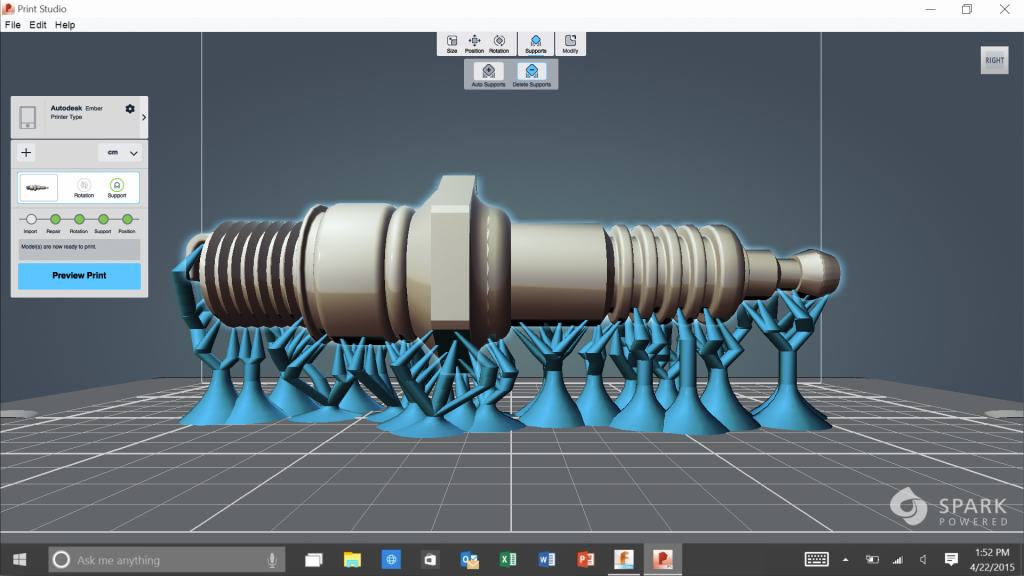Microsoft’s HoloLens is an exciting piece of technology with the potential bridge the virtual and physical worlds, via 3D printing and Augmented Reality. But, without software, the device is just a pair of heavy, prescription-less glasses. To provide those fancy frames, and Windows 10 as a whole, with 3D modeling software and a 3D printing platform is none other than Autodesk.
Today, Autodesk announced that its Spark 3D printing software platform will be embedded into Windows 10, to streamline the 3D printing process. Spark will be made available for free to the Microsoft developer community, though the fine print of the company’s press release reads “Free products are subject to the terms and conditions of the end-user license and services agreement that accompanies the software.” Autodesk hopes that, by making Spark available to developers, the platform will be enhanced by the community even further.

To this end, Corporate Vice President of Developer Platform & Evangelism and Chief Evangelist for Microsoft, Steve Guggenheimer, said, “We’re approaching a tipping point with 3D printing, which means there is a huge market opportunity waiting for companies developing applications for Windows 10. By providing the 3D printing building blocks found in the Spark platform and optimizing it for Windows 10, Autodesk has empowered our global developer community to confidently enter this new world of additive manufacturing.”
Autodesk also announced that it will be joining Microsoft’s newly launched 3MF Consortium (to be covered in a separate post), a collection of companies with the common goal of creating a unified 3D printing file format. While the file format will help to improve the quality of 3D printed objects, by incorporating a 3D file’s complete data, it will also allow 3D files to be transferred across a wide range of software. For Autodesk, this means that files from Maya or Fusion 360 can easily be brought into software used by Microsoft HoloLens. That way, game developers, filmmakers, engineers, and designers will be able to bring their 3D assets to and from other applications that take advantage of Microsoft’s unique wearable device. And, with the .3MF file format, these assets could also be 3D printed on any Spark-based printer on the market.
Samir Hanna, vice president and general manager of Consumer and at Autodesk, reflected, “3D printing is incredibly promising, but also still too complex and unreliable. This relationship is a key step in making 3D printing easier and more accessible to businesses and individuals alike. Together with Microsoft and its global community of developers, we have an opportunity to tackle the complexities of 3D design and printing head-on to improve how things are made and even change the very nature of what we create.”
With the combination of Spark, .3MF, and HoloLens, it seems that both Microsoft and Autodesk are not only primed to take over the 3D printing market, but the emerging mixed reality/reality computing market. In a future where digital and physical objects are blurred, the powerful companies doing the blurring may very well be Autodesk and Microsoft.

Leave A Comment